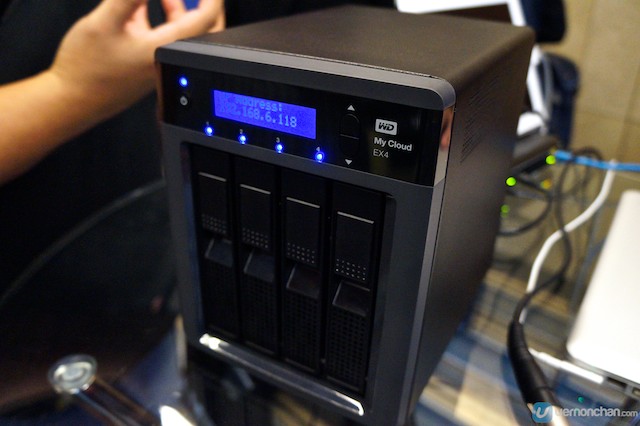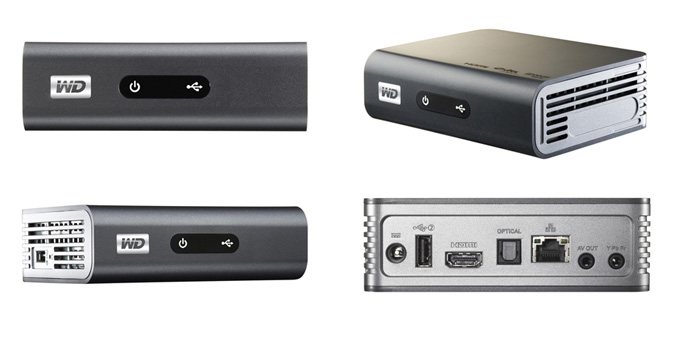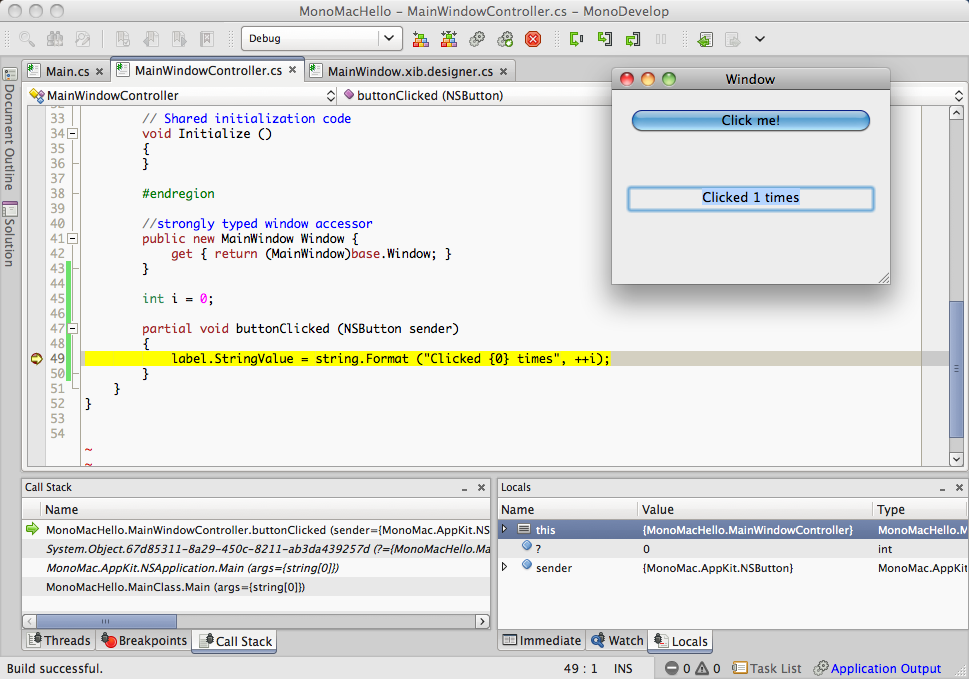Make sure both your Windows 10 machine and your Mac are connected to the same network. Click Cortana in Windows 10 and enter 'Command Prompt'. NAS (network attached storage) fills in the gaps, acting as a central hub for all your photos, videos, music, and other files. But it requires you to connect your Mac to an external storage. PC, Mac, Android, iOS Operating System Mac, PC, Android, iOS, Windows 7, Windows 8 and 8.1, Mac OSX 10.9 and 10.10, Android from 4.1, iOS from 7.X Item Weight 1.78 ounces Product Dimensions 1.46 x 2.72 x 1.08 inches Item Dimensions LxWxH 1.46 x 2.72 x 1.08 inches Color Green Manufacturer Lima Technology Inc ASIN B00WMKB7K8. Mapping a network is a process, where you reveal the path to a storage device attached to a network. There are two methods how to map your network drive on Mac. First would be for temporary use, where you loose your path to network drive after restart. The second would be a permanent one, where your Mac will detect and mount the network drive.
This article is about how to get your large files off your main computer hard drive and onto some external network storage that is more reliable, longer-term, and doesn’t take up precious space on your laptop or desktop computer. Apple don’t make an external storage solution but I found Synology have some great devices.
I upgrade my Mac computer about every 3 years. Each time I do it’s a bit like moving house – lots of stuff moves with me that I probably don’t need but I’m not ready to throw it out yet.
I just purchased a new Mac mini, but the particular SSD that Apple chose to use in the Mac mini is very expensive. A 1 TB hard disk on a new Mac Mini costs an extra $1280. That’s a lot to pay for an SSD just for storing files. To make matters worse you cannot upgrade the SSD drives in the new Mac Mini.
Enter the NAS?
Many businesses have a different approach to storage, they use what is called network attached storage (NAS). This is an external hard drive that sits outside of your computer and is accessed over the network. It’s a bit like an external thumb drive but it’s on the network so it’s always available from any computer. If you upgrade your computer you don’t have to transfer the data across, it will still be on your NAS.
NAS storage is that it is much slower than a hard drive. Think of it as being more like a filing cabinet or bookcase.

With the purchase of my new Mac Mini I’ve decided it’s a good time to transfer the bulk of my data over to a network attached storage device.
Here’s what I purchased:
1. A Synology DiskStation DS218j – NAS box AU$247

This is the external box that will hold my hard drives and attach them to the network. This particular box has two hard drives in it. Exactly the same data is on each hard disk so that f one of t
I could have also gone with Qnap or another brand, but I picked Synology after doing some research on what works well with a Mac computer.
2. Two Seagate 4TB Iron Wolf drives AU$157 each
It seems like the sweet spot for robust but affordable drives for NAS storage are the Seagate Ironwolf Pro or Western Digital RED NAS. You can spend a lot more, These are in the middle price range yet are more reliable than the standard consumer drive.
I went with Ironwolf because they supposedly work better with the Synology NAS. I chose 4TB drives because that seemed to be the sweet point at the moment in terms of TB per dollar. The two hard drives are in parallel so 2x 4TB drives still only give me 4TB in total.
3. A BR700ELCD CyberPower UPS AU$139
The icing on the cake was to buy an
This shopping spree set me back AU$700 in total, but this is a lot less than the $1280 for 1TB on the Mac Mini. Plus I now have 4TB of storage
Setting it all up.
I don’t want to describe in detail how to set it up, the instructions are pretty self-explanatory. But here’s a few a tips…
- You have no control over what the Synology hard drives are called, so don’t try changing the name. They are called home, video, music, and photo. So the NAS will eventually look like a series of separate mounted drives like this:
- It’s not like a normal hard drive where you plug it in and it mounts on your desktop. The NAS is set up like a computer and it will have an IP address that you log in to through your web browser. (eg 10.0.0.120).
- Before you use the NAS you need to log in and create a user. You can then choose drives that will be available for that user. (eg photo etc). You can choose to make all the drives available (like in the screenshot above) or just 1 or more of the drives.
- To mount the NAS and see it on your desktop you need to use the ‘Go’ menu in your OSX Menu Bar and select ‘Connect to Server.’ Type in
afp :// followed by the IP address of the NAS. egafp ://10.0.0.120 - When you log in as a user it will mount your own home folder, but not other people’s home folders. If you log in as a different user you will see a different home folder. The NAS looks different depending on who you have logged in as. But ‘shared’ folders appear the same to everyone.
- You can backup to the NAS. If you want to back up using Time Machine you need to create a completely separate user (I called my user ‘Time Machine’). This is because you want your regular user to have access to the entire 4TB of the hard drive, but you need to limit the amount of space available to Time Machine (1g 1.5TB) otherwise Time Machine will just keep on backing up to the NAS until it is completely full!
- When you tell Apple Time Machine to back up to the NAS it will automatically create a sparse-bundle in the NAS folder and put the Time Machine backup there. There are many articles on the web telling you that you need to use Apple’s disk utility to manually create a sparse image but these are wrong. Time Machine does this automatically for you. At least it did for me in OS X Mojave.
- Once you can see all the NAS hard drive folders on your computer, you will probably want to make them mount automatically each time you reboot your computer. To do this simply go to system preferences, login items, and drag the hard drive across.
- You’ll need to work out what you want to store on the NAS, and what you want on your computer. I’m still working this out, and the built-in Apple apps DO NOT play nicely with
an NAS . They like to have everything in your user folder. - It won’t really work to put your entire user folder onto the NAS because that will slow things down too much. Plus you want your computer to be able to boot properly when the NAS is not available so you don’t want any files that your computer to depends (eg the user folder) on stored on the NAS.
- I decided to manually move my large files. This turned out to be my Photo library (hard), iTunes (easy), and movies (easy).
- It’s complicated to put your Apple photo library onto a shared NAS. Apple
say not to do it. It needs to be on an OSX Extended journaled Volume or APFS. You can put it on an OSX Extended Journaled sparse bundle disk image. This was giving me problems so I’ve put my Apple photos library back on my SSD drive. - It’s easy to put your iTunes movies onto the NAS. Just move it across and point the iTunes folder there from iTunes preferences.
- I’ve
moves all my movies across except for the iMovie folder.
How to temporary or permanently map a network drive on a Mac?
Network drive is probably the best alternative for work or home environments where more than one computer is used to share files between them. However, macOS can't automatically detect network devices, unlike installed hardware. So you need to manually install and set them up, afterwards you will need to map a network drive on your Mac. Mapping a network is a process, where you reveal the path to a storage device attached to a network.
There are two methods how to map your network drive on Mac. First would be for temporary use, where you loose your path to network drive after restart. The second would be a permanent one, where your Mac will detect and mount the network drive every time it connect to the same network with attached storage. Speaking about business, network storage usually comes in the form of server storage, SANs (storage area network), NAS (network attached storage) and cloud services. However, home users also can use the same technologies, but SANs requires higher budget, so NAS or cloud storage would be more efficient.
Table of Contents:
It is recommended to run a free scan with Malwarebytes - a tool to detect malware and fix computer errors. You will need to purchase the full version to remove infections and eliminate computer errors. Free trial available.
What is a network drive?
In case you're not an experienced computer user, you probably wonder what actually is a network drive, although what SAN and NAS is and what is their differences and possibilities?
A network drive is basically any type of storage connected to your router. In most frequent cases these are made up of computers, who's acting like servers to provide storage. A NAS device might be either an external hard drive (even usb flash key) connected to your home router, either assigned NAS device builded with own hardware and multiple drives. However, storage connects to you router and permits to authorized users to reach it. A SAN is basically a more complicated NAS, that can have numerous drives available in same network. These are frequently used in enterprise.
How to temporary map a network drive
Using this method your network drive will be connected and mounted for one time use, which means that it will disappear if you disconnect from network or simply reboot your Mac.
First open Mac 0010OS Finder app, that press Command and K buttons to launch Connect to Server window. Enter the route to the network drive you desire to map, for example: smb://networkcomputer/networkshare and click Connect.
Enter your log in details and click OK to mount the network drive. From now till reboot your network drive will be shown on your desktop and in the Finder's window sidebar. You can access the network share like a usual folder at this point.
Map a network drive to Mac OS which automatically re-mounts after reconnection
Using this method will leave you an openings to reboot your Mac and keep the network drive mapped as well as network reconnections. Your Mac will automatically remounts the drive, so you will be able to find your desktop shortcut whenever you connect to network.
First open Mac 0010OS Finder app, that press Command and K buttons to launch Connect to Server window. Enter the route to the network drive you desire to map, for example: smb://networkcomputer/networkshare and click Connect.
Enter your log in details and click OK to mount the network drive. Once your drive is mounted, you need to enable automatic mounts, so open System Preferences from the Apple menu. Click on Users and Groups (or Accounts in older OS) and choose Login Items. Click on add (+) button to add another login item, locate the network drive you have mounted before and click Add. From now on your network drive will be mapped and automatically remounted every time you reboot your Mac.

However, if you disconnect or loose connection to network where the mapped network drive is located, it won't reconnect automatically until you reconnect to the network and reboot your computer. What is more, shared drive will be accessible through Finder as usual folder.
Make network drive accessible from Mac desktop
Network Mac And Pc
Good news that you may access your network drive through your Mac's desktop icon. Just follow several steps and create an icon which always appear on desktop when you connect to network.
First open Finder preferences from a menu bar in very top of you window, this appears when Finder is launched. Click the General tab and select the checkbox next to Connected Servers. This step ensure you to see the drives icon on your desktop, uncheck it and it will be only accessible in Finder window sidebars.
Mount a mapped network drive with a one click
There is a very useful additional step which allows you to create an alias of the mapped network drive, so you will be able to reconnect to the share with just one click. To create an alias, just right-click your mapped network drive icon on the desktop and select Make Alias. Once you've created alias just double-click it and your Mac reconnect to the network drive instantly. This is really useful, if you reconnecting to a network repeatedly.
Network Storage Device For Mac And Pc Software
Video Showing how to map a network drive on Mac:

